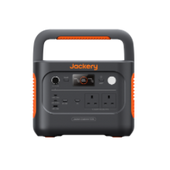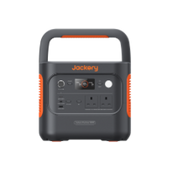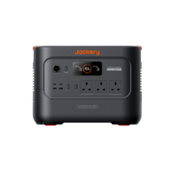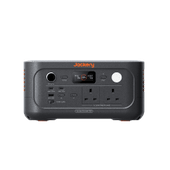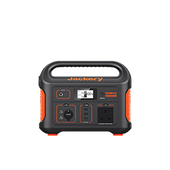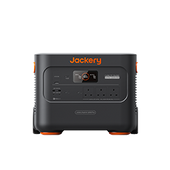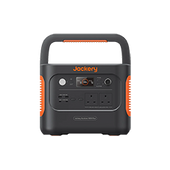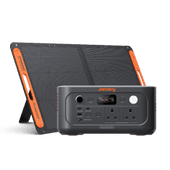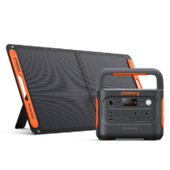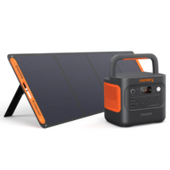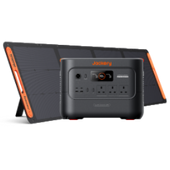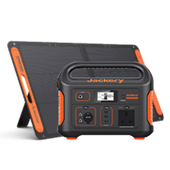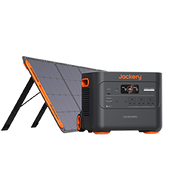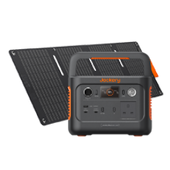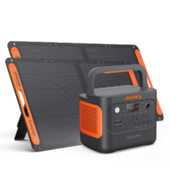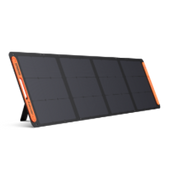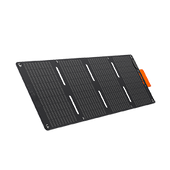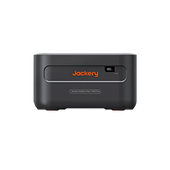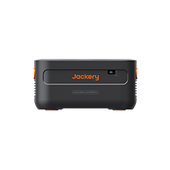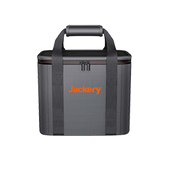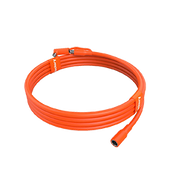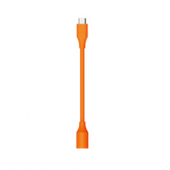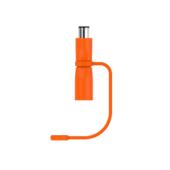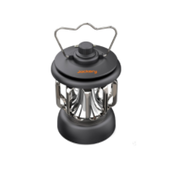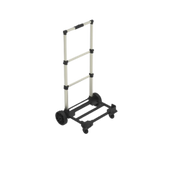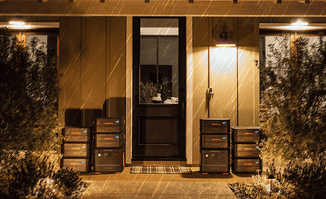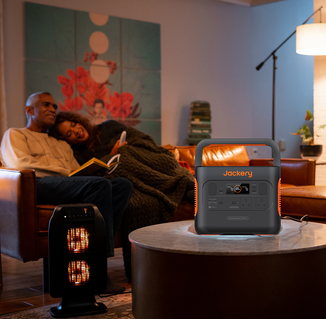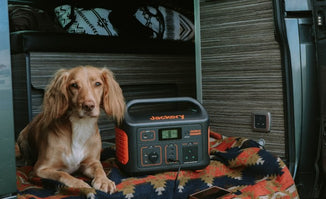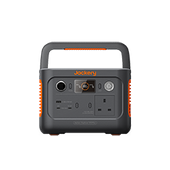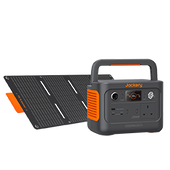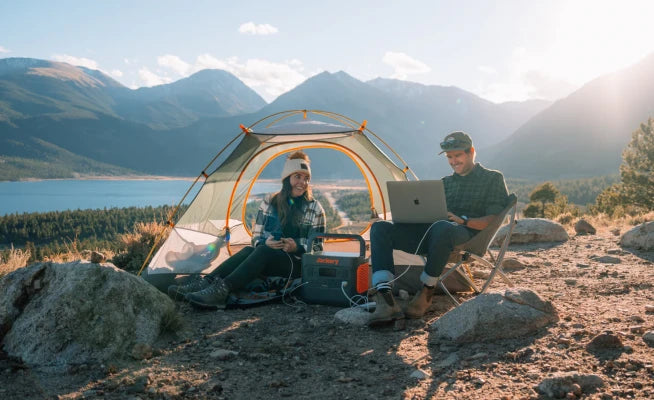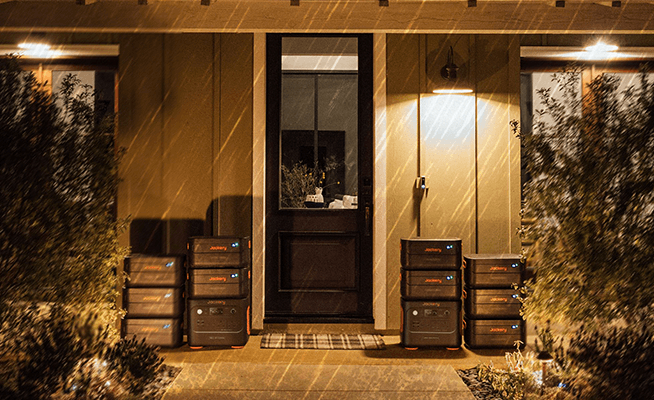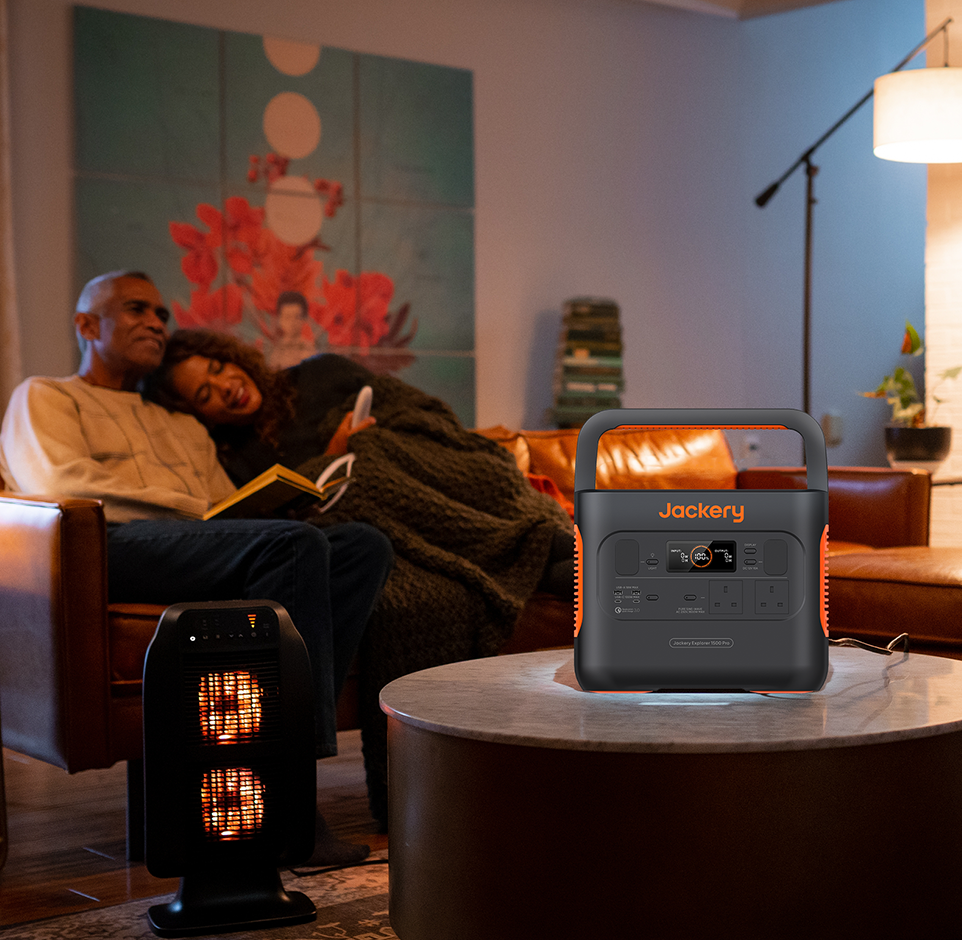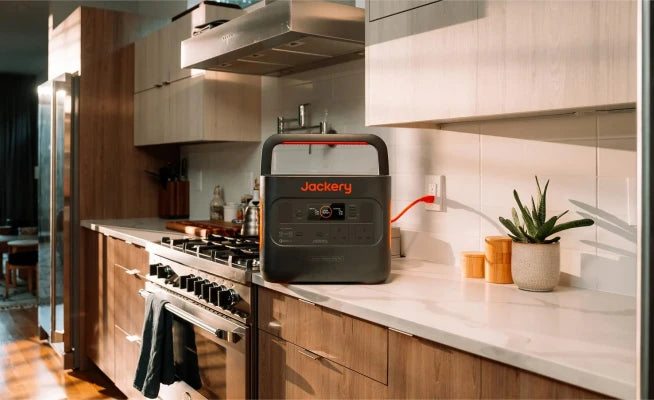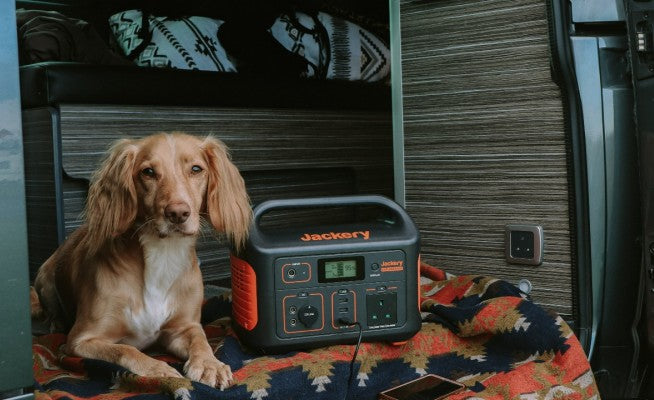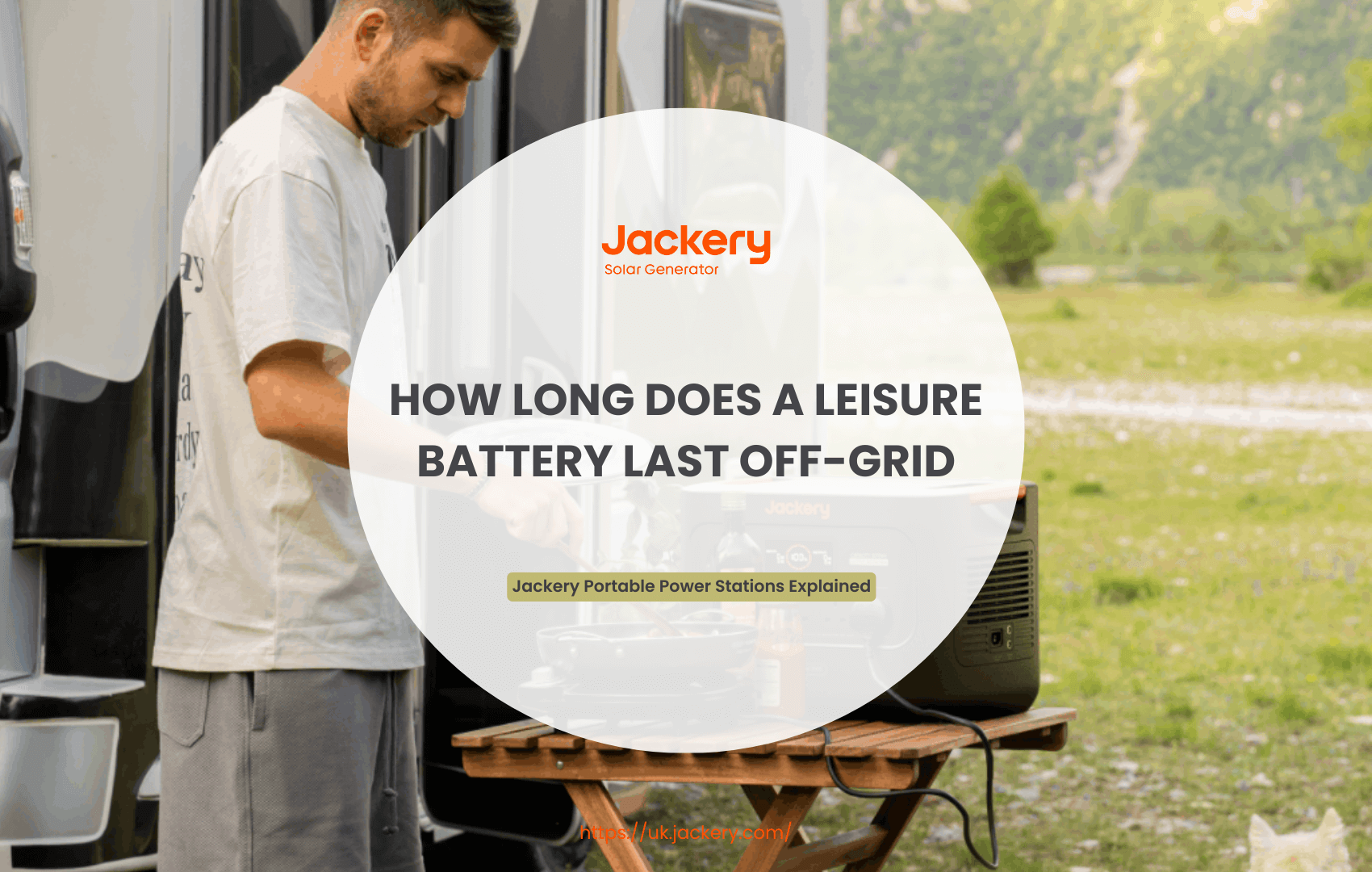The demand for leisure batteries is increasing as more people venture outside to engage in outdoor activities. In situations where conventional grid power is unavailable, leisure batteries provide a portable power source for a range of appliances and gadgets.
However, what is the lifespan of a leisure battery off the grid? How can you be sure it will be a good companion for the duration of your off-grid adventure? We'll cover the fundamentals of leisure batteries in the sections that follow, including their types, lifespan, and methods for prolonging it.
|
Key Takeaways: |
|
Leisure Battery Basics: What It Is, How It Works and Types
Before delving into how long a leisure battery lasts off-grid, let's first understand what a leisure battery is, how it works, and what types of batteries it comes in.
What is a Leisure Battery?
A deep-cycle battery, designed to deliver a consistent power output over extended periods, is commonly referred to as a leisure battery. Leisure batteries have a longer lifespan than automobile batteries, which provide high energy output in brief spurts. They are frequently used to power lights, appliances, and other electrical devices in boats, RVs, and off-grid locations.
How Do Leisure Batteries Work?
Electrochemical reactions—the reversible transformation of chemical energy into electrical energy—are the foundation of the fundamental working concept of leisure batteries.
Discharging (Using Electrical Energy): The active elements in the battery go through chemical reactions that produce a flow of electrons (current), which in turn produces electrical energy when the battery is linked to an electrical device (like the lights in an RV). The battery's chemical components are consumed in this process.
Charging (Storing Electrical Energy): An external current flows in the opposite direction when the battery is connected to a charging source, like a solar panel. This restores the battery's chemical composition to its initial state and stores the electrical energy as chemical energy.

Main Types of Leisure Batteries
The first step in figuring out how long a leisure battery lasts off the grid is to understand the various types of leisure batteries. The primary kinds are as follows:
Lead-acid Batteries: The most popular and reasonably priced kind of leisure battery is the lead-acid battery. There are two primary varieties: sealed and flooded. They have a shorter lifespan than other types of batteries and require frequent maintenance, despite being dependable and reasonably priced.
AGM Batteries: One kind of sealed lead-acid battery that performs better and lasts longer than conventional batteries is the Absorbed Glass Mat (AGM) battery. They are well-liked by off-grid battery aficionados due to their low maintenance requirements and ability to withstand deep discharge.
Lithium-ion Batteries: The most cutting-edge and practical kind of leisure battery is the lithium-ion battery. Compared to lead-acid batteries, they are far lighter, have a better energy density, and a substantially longer lifespan. They are more costly, but for heavy off-grid users, their longevity and performance investment is justified.
|
Features |
Lead-acid battery |
AGM Battery |
Lithium-ion battery |
|
Energy density |
Low |
Medium |
High |
|
Cycle life |
Short (300-500 cycles) |
Medium (500-800 cycles) |
Long (2000-5000 cycles) |
|
Price |
Lowest |
Medium |
High |
|
Maintenance requirements |
High |
Maintenance-Free |
Maintenance-free |
|
Safety |
High |
High |
Risk of thermal runaway |
|
Self-discharge rate |
High (3%-5% per month) |
Low (1%-3% per month) |
Very low (1%-2% per month) |
|
Charge and discharge efficiency |
Low (approximately 70%-80%) |
Medium (approximately 80%-85%) |
High (approximately 95%-99%) |
|
Operating temperature |
Poor low-temperature performance |
The low-temperature performance is superior to that of ordinary lead-acid batteries. |
Wider operating range |
|
Environmental friendliness |
Poor |
Poor |
Better |
How Long Does a Leisure Battery Last Off-Grid?
Campers and RVers often use leisure batteries to power their appliances and electronic devices. How long does a leisure battery last off-grid? The total usable capacity (Wh) of a leisure battery and the total power consumption (W) of all devices using it determine how long the battery can run off the grid; there is no set range for this. Please take the following actions to find out how long a leisure battery lasts off the grid:

Step 1: Determine the Entire Usable Capacity of the Battery
The battery's stated capacity (e.g., 100Ah) needs to be converted twice to reflect the real amount of power you may utilise. Utilise the following calculation to get the battery's overall usable capacity:
Battery voltage (V) × Battery nominal capacity (Ah) × Depth of Discharge (DoD) = Battery useable capacity (Wh)
The nominal capacity (Ah) of a leisure battery is usually 100Ah, 200Ah, etc., and the voltage is typically 12V. The depth of discharge of lithium-ion batteries can range from 80% to 100%.
Example 1: What is the functional capacity of a 12V, 100Ah lithium battery?
12V × 100Ah × 90% = 1080 Wh is the usable capacity (Wh).
Step 2: Determine How Much Power Each Electrical Device Uses Overall
Please list all the appliances you intend to use, along with their projected wattage and usage duration. An appliance's wattage (W) is often indicated on the device or in the handbook.
A common camping power list is as follows:
|
Electrical Appliances |
Power (W) |
Daily Usage (h) |
Daily Power Consumption (Wh) |
|
LED lights |
10W |
4 h |
40 Wh |
|
12V refrigerator |
50W |
9 h |
450 Wh |
|
Mobile phone/tablet charger |
15W |
2 h |
30 Wh |
|
Fan |
30W |
5 h |
150 Wh |
This table should be used as a guide only. The equipment's actual power consumption can vary based on its size, brand, model, and other factors.
Example 2: According to this standard camping power list, all electrical equipment uses about 670 Wh of electricity in total (40 Wh + 450 Wh + 30 Wh + 150 Wh = 670 Wh).
Step 3: Determine How Much Time Is Available for Use
To calculate the approximate usage duration, divide the battery's usable capacity (Wh) by the total amount of power the devices consume each day. Battery Usable Capacity (Wh) ÷ Total Daily Power Consumption (Wh/day) = Useable Days
Example 3: How long can a 12V, 100Ah lithium battery endure for normal camping vacations, based on Examples 1 and 2?
1080 Wh ÷ 550 Wh/day ≈ 1.96 days = Usable Days
During everyday camping outings, a 12V, 100Ah lithium battery can last for about two days.
What Factors Affect How Long a Leisure Battery Lasts Off-Grid?
How long does a leisure battery last off-grid? In reality, several factors, including the battery's properties, usage patterns, and ambient conditions, affect the duration a leisure battery can last off the grid.

The Capacity of Batteries (Ah/Wh)
A leisure battery's capacity determines how much energy it can store and, theoretically, how long it will last. A 200Ah battery, for instance, can run for longer periods or travel farther than a 100Ah battery.
Type of Battery and Discharge Depth
The depth of discharge that lithium-ion batteries can reach is greater than 80% to 90%. In reality, a 100Ah lithium battery can store 80–90Ah. The Depth of Discharge (DoD) of lead-acid batteries should typically not exceed 50%. This indicates that the safe usable capacity of a 100Ah lead-acid battery is limited to 50Ah.
Battery Health
The battery experiences chemical deterioration as the number of charge and discharge cycles rises, which lowers its capacity and eventually shortens its lifespan. A battery that is three years old, for instance, may retain only 70–80% of its original capacity.
Appliance Power
The wattage of the equipment you use also affects how long a leisure battery lasts off the grid. With a 44W lamp, for instance, a 200Ah battery may last 1000 hours, but with a 2200W air conditioner, it may only last 20 hours.
Ambient Temperature
Reaction rates in leisure batteries, which are electrochemical systems, are directly impacted by temperature. Low temperatures, for instance, drastically lower the battery's functional capacity by decreasing the effectiveness of its chemical reactions. Battery capacity drops by approximately 0.1 Wh for every 1°C reduction in temperature. A lithium battery's capacity can drop by more than 20% in subfreezing temperatures.
How to Extend the Use Time of the Leisure Battery Off-Grid?
Maximising the battery life of your leisure battery is crucial for a successful off-grid experience. Here are some tips and measures to help you maximise your leisure battery's off-grid usage:

Tip 1: Switch Off Any Unnecessary Loads
Ensure all lights and unnecessary appliances are turned off before leaving your car. Furthermore, much equipment should be entirely disconnected when not in use, as it still requires electricity even in standby mode. For simple, one-touch power off, utilise a power strip with a switch.
Tip 2: Prioritise DC Devices
Give DC devices precedence over AC ones. A 10%–20% energy loss may occur when the battery's DC power is converted to AC via an inverter. Fans, laptop chargers, and refrigerators that utilise 12V DC, for instance, use less energy than those that use 220V AC.
Tip 3: Plan Your Electricity Usage Wisely
Power recharging is scarce when off the grid. To prevent wasting energy, it's crucial to limit your electricity use to essential times. During one or two designated times each day, concentrate on using your leisure battery to power gadgets and appliances. Electric kettles and other high-power appliances should be used sparingly to prevent extended, ineffective use.
Tip 4: Keep the Proper Operating and Storage Temperatures
The optimal operating temperature range for leisure batteries is 20°C to 25°C. Low temperatures decrease functional capacity (particularly for lithium batteries), whereas high temperatures hasten ageing. They ought to be kept out of direct sunlight in a cool, dry location.
Tip 5: Put in a Battery Monitor
You can avoid over-discharge and keep track of your battery's charge level with the aid of a battery monitor. It displays important data in real-time, such as voltage, current, % of charge remaining, and amount of power utilised (Ah). This enables you to plan your electricity usage effectively, avoid overdischarge, and understand the power flow properly.
Tip 6: Utilise a Standby Generator to Augment Electricity
During periods of high demand or prolonged rainfall, a generator provides a dependable power supply. Select a silent, fuel-efficient, and sufficiently powerful inverter generator as a backup power source to quickly recharge batteries or operate high-power devices when you're off the grid for an extended period.
Tip 7: Utilise a Solar Panel to Charge
Installing a fixed or portable solar panel will allow you to charge while using it and continuously refill power throughout the day. Install more powerful solar panels (such as 300W, 600W, or more) if the circumstances allow. To increase the efficiency of solar energy conversion, an MPPT (Maximum Power Point Tracking) controller is also recommended.
How to Choose a Suitable Leisure Battery?
When selecting the ideal leisure battery for your off-grid excursion, your budget, intended activities, and power requirements must all be carefully considered. The following crucial buying advice will assist you in making an informed choice:

Determine Your Power Requirements
Based on your power requirements, first ascertain the leisure battery's power (W) and capacity (Wh). For short, leisure camping trips of 1-2 days: A leisure battery with a power rating between 300W and 600W and a capacity between 300Wh and 600Wh will meet your needs.
For longer road trips or family camping trips, we recommend selecting a high-capacity leisure battery with a power rating of 1000W or higher and a capacity of 1000Wh or higher, ensuring the ability to run multiple devices simultaneously and for extended use.
Pay Attention to Safety
Because leisure batteries store a significant amount of energy, safety must be the primary consideration. It is recommended to use lithium-iron-phosphate batteries. These batteries exhibit strong thermal stability up to 500°C. The risk of fire is reduced because heat release is gradual and oxygen is not released, even in the case of thermal runaway. Moreover, lithium iron phosphate batteries are better suited for long-term use due to their greater cycle life, which typically exceeds 2,000 cycles.
Focus on Portability and Protective Performance
A leisure battery's carrying experience is directly impacted by its size and weight. In general, a device's weight increases with its capacity. Lightweight design should be given priority for bicycles and hikers; self-driving users can loosen these specifications. To avoid damage from collisions or adverse weather conditions, consider the casing's durability, resistance to dust, and ability to withstand drops.
Comprehensively Consider the Price-Performance Ratio
High performance is not always correlated with a high price. AGM or gel batteries can provide a decent compromise between cost and performance if you have a tight budget, even though lithium-ion batteries are more expensive but offer better performance.
To put it briefly, selecting the best leisure battery requires careful evaluation of several variables, including battery type, usage scenario, power and capacity, portability, and safety. Avoid heedlessly aiming for high capacity or high power; instead, make a logical choice based on your actual needs.
Jackery Portable Power Stations for Off-Grid Use
A steady and dependable power source has emerged as a crucial necessity for contemporary camping, road excursions, and off-grid living in the quest for an unrestricted and natural outdoor lifestyle. Campers and RV enthusiasts frequently utilise leisure batteries to run household appliances and equipment.
So, how long does a leisure battery last off-grid? Theoretically, a leisure battery's lifespan increases with its capacity. A 200Ah battery, for instance, can last longer than a 100Ah battery. In addition to effortlessly powering popular household goods like rice cookers, microwave ovens, coffee makers, and projectors, Jackery Portable Power Stations also have a large-capacity battery that enables worry-free off-grid power use for several days.
Jackery Explorer 2000 Plus Portable Power Station
The finest off-grid leisure battery option is the Jackery Explorer 2000 Plus, thanks to its outstanding performance, dependable quality, and user-friendly design. The Jackery Explorer 2000 Plus Portable Power Station's salient features are as follows:

High Power and Large Capacity: With its enormous capacity (2042.8Wh) and strong power output (3000W), the Explorer 2000 Plus can effortlessly power kettles, coffee makers, ovens, and even some outdoor power tools, satisfying the demanding power needs of outdoor activities. Its capacity may be increased to 12 kWh by connecting five power packs, which would raise the bar for off-grid life.
Adopts Fast Charging Technology: Vehicle charging, wall charging, and solar charging (with MPPT intelligent tracking for maximum efficiency) are all supported by the Explorer 2000 Plus. Using an AC wall charger, it can be fully charged in around 1.7 hours. With its 25% solar conversion efficiency, the Jackery solar panel can fully charge the central unit in as little as two hours under optimal sunlight, significantly reducing power concerns when off the grid.
Secure and Sturdy: ChargeShield, a feature of the Explorer 2000 Plus, improves safety and prolongs battery life by 50% with 62 protective mechanisms, 12 security algorithms, and four physical protections. Even with frequent use, its exceptional lithium-iron-phosphate battery (LiFePO4) can last up to ten years. The battery retains around 70% of its capacity even after 4,000 cycles of charging.
Smart and Transportable: With dimensions of 18.6 x 14.1 x 14.7 in and a weight of 61.5 lbs, the Explorer 2000 Plus is smaller and lighter than most portable power stations on the market. For simple mobility, it has anti-skid wheels and a handle. You can easily manage your 2000 Plus by controlling and monitoring it with the Jackery app. It features adjustable settings, real-time status monitoring, and compatibility with numerous devices.
Jackery Explorer 1000 Plus Portable Power Station
The Jackery Explorer 1000 Plus is among the best portable power stations available for off-grid use, thanks to its exceptional performance and adaptable energy management features. The Jackery Explorer 1000 Plus Portable Power Station's salient features are as follows:

Large-Scale Energy Storage: With a built-in 1264Wh lithium-iron-phosphate battery, the Explorer 1000 Plus has significantly more energy than most outdoor power sources. To achieve home-scale off-grid power, the capacity can be increased to 5kWh by adding up to three more battery packs. This will meet the power requirements of essential appliances, such as laptops, fans, lights, and refrigerators.
Strong Output: With a rated output power of 2000W and a peak power of up to 4000W, the Explorer 1000 Plus is 20% more potent than standard 1kWh LFP power plants. Powering sensitive electronic devices, such as laptops, cameras, and medical equipment, is secure due to its pure sine wave inverter technology, which ensures that the output current waveform matches the mains current waveform, providing a stable and reliable power supply.
Meet the Needs of Multiple Devices at the Same Time: Due to its extensive port array, the Explorer 1000 Plus can power multiple devices simultaneously. It features a 12V auto charger output, two five-outlet AC outlets for high-power appliances, and two USB-C and two USB-A ports that support PD fast charging, allowing for quick charging of phones, tablets, and cameras.
Simple to Use: The Explorer 1000 Plus is easy to use and more convenient than conventional generators. Press the button after connecting the item to the corresponding port. Additionally, it just takes 60 seconds to connect the solar panel to the power plant. Additionally, it features pass-through charging, which allows users to power other devices via the output connection while the generator is charging.
When Should You Replace a Leisure Battery?
Even with adequate care, leisure battery batteries will eventually age and need to be replaced. If the conditions listed below occur, you should consider changing your leisure batteries. Continued use may increase the risk of fire, explosion, or electrical shock.
Case 1: Swelling or Bulging
This is frequently a symptom of chemical reactions and gas buildup within the battery, which can lead to a short circuit, overheating, or even fire. This is a significant safety danger that must be removed from service immediately and replaced
Case 2: Significant Deformation or Breaking of the Exterior Shell
This could be caused by swelling or severe damage to the internal battery pack. This can harm the internal insulation, increasing the likelihood of leaks, short circuits, and dampness. As a result, immediately remove the battery from service and replace it.
Case 3: The Charging or Discharging Ports are Loose or Damaged
Loose or broken charging or discharging ports can impair charging efficiency and stability of device connections. In severe circumstances, they might result in poor contact, sparks, or even charging and discharging problems, compromising safety and user experience. Replacement is recommended.
Case 4: Unusually Long Charging Time
Under the same charging settings, a significantly longer charging time (more than double the initial charge time) may indicate an increase in internal resistance or cell ageing, which can reduce battery efficiency.
Case 5: Usable Time is Shortened
The most prevalent ageing phenomenon is a decline in battery capacity as the number of charge cycles increases. When the actual usable capacity falls below 60%-70% of the nominal capacity (for example, a battery that could previously charge a phone ten times now only charges it six times), consider replacing it.
In summary, if you observe swelling, deformation, damaged connectors, a sudden decline in performance, or if the battery has exceeded its service life, replace it right away. While some of these difficulties may not constitute an immediate hazard, they may indicate that the battery has degraded severely and is no longer matching your demands, necessitating a replacement.
FAQs
The following are the frequently asked questions about how long a leisure battery lasts off-grid:
1. How long will a leisure battery last off-grid?
Consider your electricity usage and battery capacity when estimating the duration of your leisure batteries' off-grid operation. For example, if you have a leisure battery with a usable capacity of 100Wh and your devices use 10Wh per hour, your battery will last about 10 hours. However, factors such as battery efficiency, temperature, and depth of discharge will all impact the longevity of your leisure battery.
2. How long will a 100Ah leisure battery last?
The lifespan of a 100Ah leisure battery varies depending on the gadget being used. For example, if you have a 12V gadget with a 100Ah 12V lithium battery, you can use an amp-hour calculator to estimate the battery's life. If your gadget draws five amps, the 100Ah battery should last 20 hours before requiring a recharge (100Ah ÷ 5 amps = 20 hours).
3. How often should a leisure battery be charged?
If you frequently use your leisure batteries, don't wait until they're entirely exhausted before charging, and avoid leaving them fully charged for extended periods. For lithium-ion batteries, the recommended charge level is between 20% and 80%. Check the charge of leisure batteries stored for extended durations every three to six months. If the charge is less than 20%, recharge it to between 40% and 60% before continuing to store it.
4. Do leisure batteries drain when not in use?
Yes, leisure batteries can drain even when not in use. While this current appears to be tiny, it can easily deplete the battery completely within two weeks. The simplest way to prevent this is to entirely detach the battery or use a battery isolation switch (if the battery comes with one).
Final Thoughts
A leisure battery is a deep-cycle battery that provides consistent power over an extended period. It is widely used in recreational vehicles (RVs), yachts, and off-grid installations to power appliances, lights, and other electrical devices. The capacity, kind, and health of a leisure battery determine how long it can operate off-grid.
For example, a 12V, 100Ah lithium-ion battery can last roughly two days on a typical camping trip. If you want to power your off-grid existence for an extended period, consider the Jackery Explorer 2000 Plus and 1000 Plus, which offer high capacity, a safety factor, and solar charging capabilities.
References:
The Advantages of Using Projecta Power Inverters for Powering Your Adventure | Myts Park.
Can I Charge My Caravan Battery From My Car? - Read The Answer.



